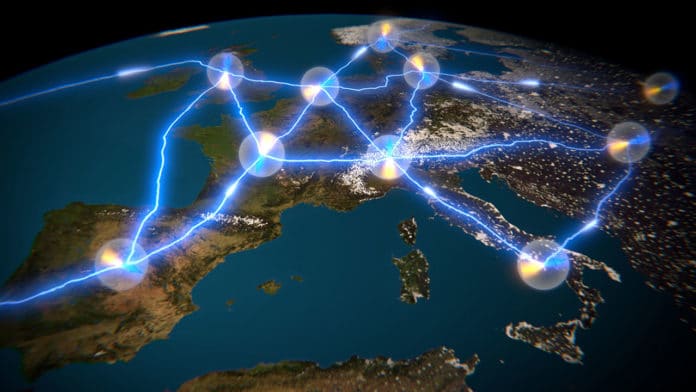The quantum internet will let quantum devices exchange some information within an environment that harnesses quantum mechanics’ weird laws. It uses an intriguing quantum phenomenon to connect different nodes in a network together.
Unlike normal network, the quantum internet nodes are connected by entanglement, Einstein’s famous “spooky action at a distance.” These non-classical correlations at large distances would secure communications beyond the direct transmission and distributed quantum computing or enhanced senses.
Nonetheless, one significant challenge in building large-scale quantum networks is generating such correlations between’s distant nodes. This challenge can be overcome on a basic level if entanglement is dependably put away in quantum memory devices.
By splitting the long-distance into several shorter segments, it is conceivable to create entanglement between the end of these elementary links and then interface them until both initial nodes are entangled. The quantum memory devices store the entanglement, ensuring that ensnarement has been created over all the segments before performing the connections. This protocol is known as a quantum repeater.
A critical parameter is the quantum memory devices’ efficiency: If one device fails in recording or retrieving the entangled light, the quantum repeater cannot function properly.
In a new study, scientists from Sorbonne University in Paris have achieved a highly efficient transfer of quantum entanglement into and out of two quantum memory devices. Scientists demonstrated the storage and retrieval of entangled light beams into two quantum memory devices, with an overall efficiency as high as 85%.
Félix Hoffet, a Ph.D. student at LKB and one of the leading authors of the paper, said, “This achievement is the result of 10 years of experimental developments in our lab. It now opens the path to further investigation as many potential network architectures assume such efficiency value for scalability.”
For the experiment, scientists used a very elongated ensemble of laser-cooled cesium atoms. The ensemble was based on the protocol called electromagnetically induced transparency.
A control laser beam makes the medium transparent and slows down the impinging signal light carrying the information. When the signal is contained within the ensemble, and the control beam is turned off, the information is converted into a collective excitation of the atoms, stored until the control beams are turned on again.
At first, scientists generated two light beams that are entangled. They then mapped them into two memories following this protocol. By using specific atomic transitions and reaching a very large absorption in each memory, scientists could write and read out the entanglement with unprecedented efficiency while preserving shallow noise contamination.
Mingtao Cao, a former Marie Curie postdoctoral fellow and the other leading author of the paper, said, “Our record efficiency first required a strong theoretical effort to understand better the limiting factors in our prior implementation and then an experimental tour-de-force to combine all the required ingredients.”
The study is a step forward towards further investigations. However, the path for building large-scale networks is still paved with challenges.
Journal Reference:
- Mingtao Cao et al. Efficient reversible entanglement transfer between light and quantum memories, Optica (2020). DOI: 10.1364/OPTICA.400695
